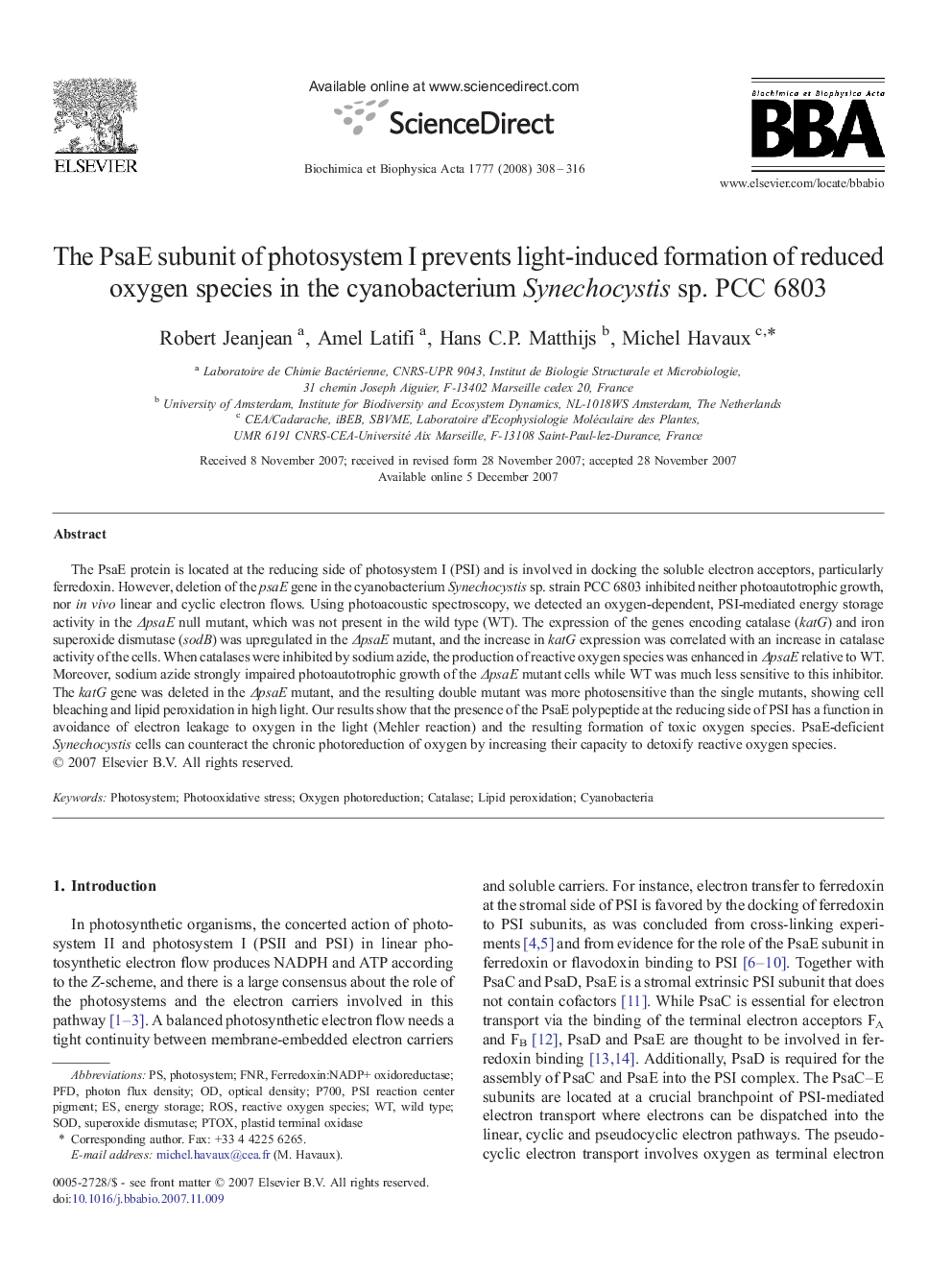| Article ID | Journal | Published Year | Pages | File Type |
|---|---|---|---|---|
| 1943279 | Biochimica et Biophysica Acta (BBA) - Bioenergetics | 2008 | 9 Pages |
The PsaE protein is located at the reducing side of photosystem I (PSI) and is involved in docking the soluble electron acceptors, particularly ferredoxin. However, deletion of the psaE gene in the cyanobacterium Synechocystis sp. strain PCC 6803 inhibited neither photoautotrophic growth, nor in vivo linear and cyclic electron flows. Using photoacoustic spectroscopy, we detected an oxygen-dependent, PSI-mediated energy storage activity in the ΔpsaE null mutant, which was not present in the wild type (WT). The expression of the genes encoding catalase (katG) and iron superoxide dismutase (sodB) was upregulated in the ΔpsaE mutant, and the increase in katG expression was correlated with an increase in catalase activity of the cells. When catalases were inhibited by sodium azide, the production of reactive oxygen species was enhanced in ΔpsaE relative to WT. Moreover, sodium azide strongly impaired photoautotrophic growth of the ΔpsaE mutant cells while WT was much less sensitive to this inhibitor. The katG gene was deleted in the ΔpsaE mutant, and the resulting double mutant was more photosensitive than the single mutants, showing cell bleaching and lipid peroxidation in high light. Our results show that the presence of the PsaE polypeptide at the reducing side of PSI has a function in avoidance of electron leakage to oxygen in the light (Mehler reaction) and the resulting formation of toxic oxygen species. PsaE-deficient Synechocystis cells can counteract the chronic photoreduction of oxygen by increasing their capacity to detoxify reactive oxygen species.
